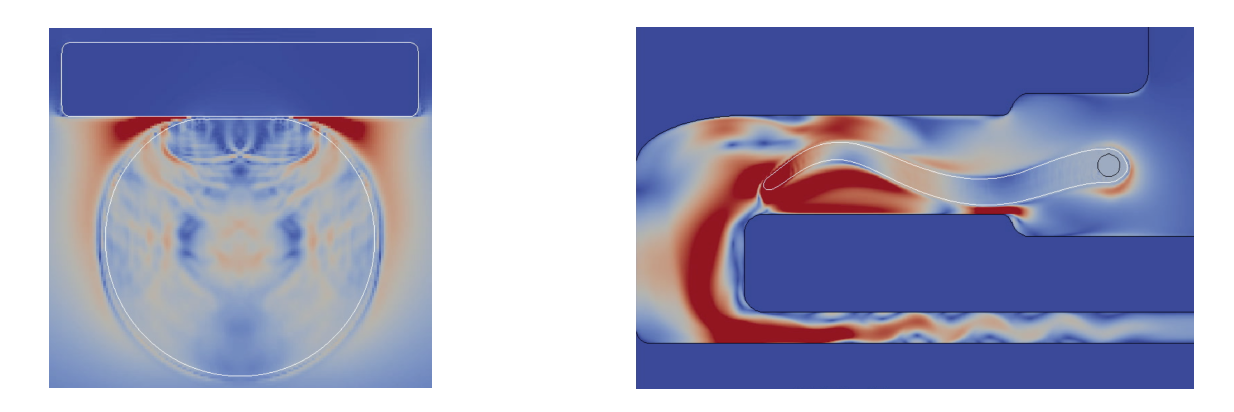Section: New Results
Fluid-structure interaction and a monolithic scheme
Fluid-structure interaction (FSI) problems are still today difficult to solve on the numerical point of view. Memphis team works on the development of a new numerical method for the simulation of these phenomenas. This method relies on a FSI coupling scheme called "monolithic", in which an eulerian hyperelastic model (Mooney-Rivlin) predicts the behaviour of an elastic structure, all of this in the context of an implicit inclusion of the geometry. A 2D axi-symmetric incompressible Navier-Stokes model is used to follow the behaviour of a newtonian fluid, interacting with this elastic body.
With this coupling method, the solid and fluid problems are solve as a unique numerical solver. This approach has already been studied in the Memphis team for compressible fluids. This process seems to be interesting while it competes on the accuracy point of view with the partitioned approches, commonly used in the literature. More over, an eulerian formalism releases us from the constraints related to the tracking of the fluid-structure interface, which remains the key difficulty for lagrangian methods. This implicit consideration is therefore coherent from the perspective of including complexe geometries. In responding to difficulties related to the monolithic scheme, we employ a kind of meshing, particularly adapted to AMR (Adaptative Mesh Refinement). Developed by the OPTIMAD society, the library PABLO offers the ability to build conceptually simple meshes, natively parallel, and convenient to use. The hierarchical cartesian meshes are also particularly adapted to complex geometries.
The fluid-structure interface is followed via a level-set function. This one is transported in time with a 2nd order semi-lagrangian scheme which is volume conservative, and it is frequently reinitialize with a redistanciation algorithm. A linear extrapolation algorithm (Aslam) is besides added as a complement to the elastic model in order to limit the "non physical" effects introduced by the monolithic coupling scheme. Finally, a contact model is employed to model the collision between an elastic solid and a rigid solid which can occur in particular in a cardiac pump based on oscillating membranes.



